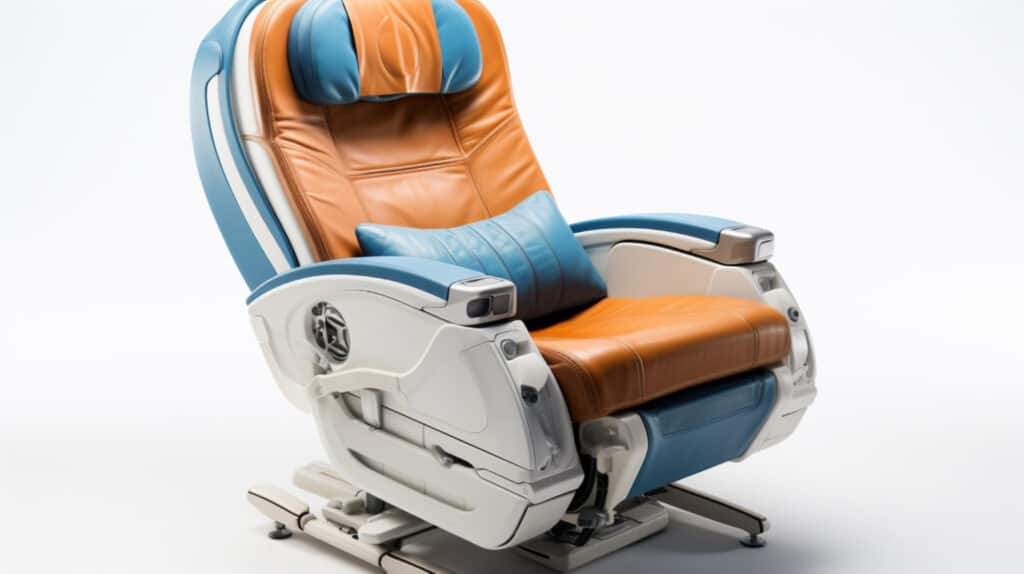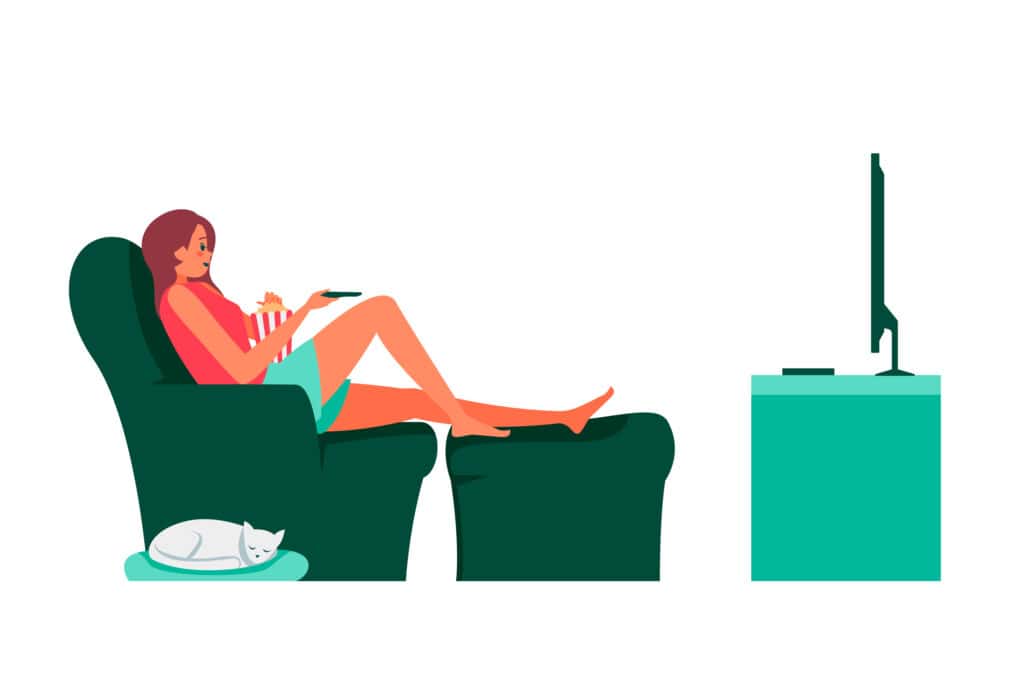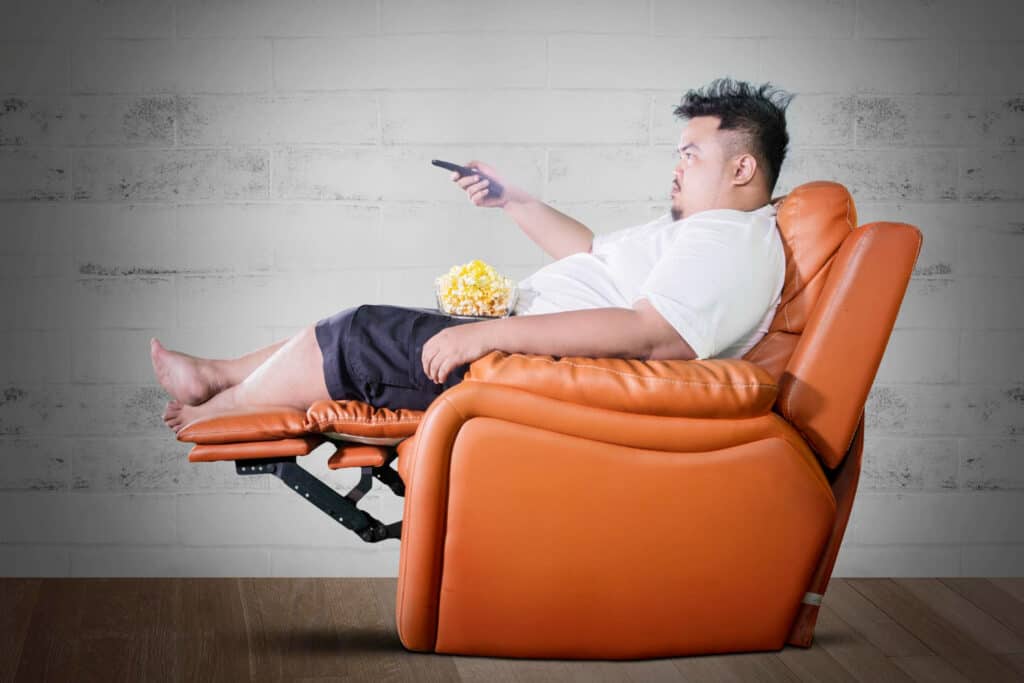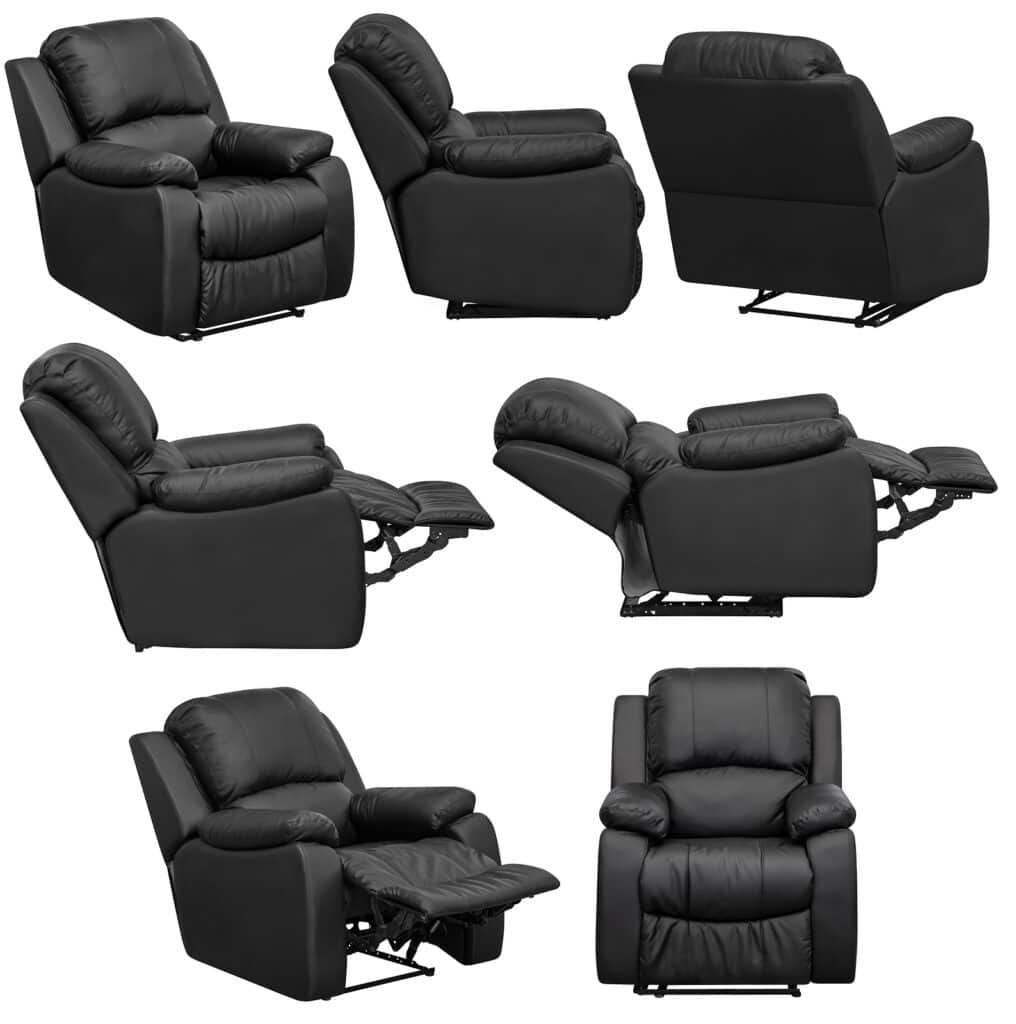Recliner Chair Electricity Use
In my own home, recliner chairs have become an absolute must-have. They provide a level of comfort and relaxation that's hard to beat, especially after a long day. But in today's tech-driven world, it's important to be mindful of how much electricity these modern marvels actually use.
So, let's dive into the world of recliner chair electricity consumption from my perspective. I'll walk you through the various components that gobble up power, share some energy-efficient alternatives I've discovered, and offer some handy tips to keep that electricity bill in check.
How Recliner Chairs Work
To gain a comprehensive insight into the electricity usage of recliner chairs, it's essential to grasp how these chairs work and the specific components that contribute to power consumption.
Power Source
Electric recliner chairs typically draw power from a standard electrical outlet. They are equipped with a power cord that connects to the chair's control system, which is typically situated on the chair's side. This connection is vital as it supplies the chair with the electricity needed to operate its various functions.
Electric Motor
At the heart of a recliner's functionality is its electric motor. This motor is responsible for adjusting the chair's position, enabling you to effortlessly recline or return to an upright seating position with the simple push of a button. The power consumption of the electric motor varies depending on factors such as the chair's design and quality. Understanding the motor's energy requirements is crucial in assessing the overall electricity usage of the recliner.
Heating and Massage Features
Many contemporary recliners are equipped with luxurious features such as built-in heaters and massage functions. While these amenities enhance comfort, they also rely on electricity to function. The utilization of heating elements and massage motors can significantly impact the chair's overall power consumption. Therefore, these features are essential considerations when evaluating the electricity usage of an electric recliner.
Control Mechanism
Recliner chairs come with control mechanisms that allow users to operate various functions seamlessly. These control mechanisms can be either wired or wireless, depending on the chair's model. While the power draw from the control mechanism is relatively minimal compared to other components, it is still a contributing factor to the chair's overall power consumption. Understanding the control system's energy usage aids in obtaining a more precise assessment of the recliner's electricity requirements.

Calculating Electricity Consumption
To gain a comprehensive understanding of the electricity consumption associated with a typical electric recliner chair, it's essential to delve deeper into the calculation process, taking into account various factors that contribute to its power usage.
- Wattage and Voltage Requirements: The first step in calculating electricity consumption involves identifying the chair's wattage and voltage specifications. These critical details are typically documented in the chair's user manual or provided on a label affixed to the chair itself. Understanding the wattage and voltage requirements is fundamental, as it forms the foundation for assessing the chair's energy usage accurately.
- Daily Utilization: Estimating the frequency of your chair's use on a daily basis is the next key consideration. For instance, if you employ the chair for two hours each day, you must calculate its hourly energy consumption. Delving into your usage patterns provides a more precise picture of how the chair's electrical demands impact your energy consumption.
- Monthly and Annual Expenditure: Once you've obtained the wattage, voltage, and daily utilization figures, you can proceed to compute the monthly and annual electricity costs associated with operating your recliner chair. The calculation process involves multiplying the wattage by the number of hours the chair is in use each day. This result is then multiplied by your prevailing electricity rate to yield the daily cost. To determine the monthly and annual expenses, you subsequently multiply the daily cost by the number of days in a month or year, respectively.
- Consider Additional Features: If your electric recliner chair boasts additional features such as built-in heaters or massage functions, it's crucial to factor these into your calculations. These supplementary functions augment the overall power consumption of the chair. Therefore, incorporating their energy requirements into your assessment provides a more comprehensive understanding of the chair's electricity usage and associated costs.
- Energy Efficiency Measures: To optimize energy efficiency and reduce electricity expenses, consider implementing energy-saving strategies. This might entail using the chair's additional features judiciously or investing in energy-efficient models. By making informed decisions based on the comprehensive calculation of electricity consumption, you can take steps to minimize the environmental and financial impact of your electric recliner chair.
Energy-Efficient Recliner Chairs
If you're concerned about the environmental and financial impact of electricity consumption, there are several options available to ensure you select energy-efficient recliner chairs that align with your sustainability goals and reduce power usage.
ENERGY STAR Certification
One of the most reliable indicators of energy efficiency in appliances, including recliner chairs, is the ENERGY STAR certification. When shopping for a recliner, look for models that bear this certification. ENERGY STAR-certified recliners adhere to stringent energy efficiency standards, guaranteeing that they consume less electricity while providing the same level of comfort and functionality. This certification is a clear signal that the chair has been designed with energy conservation in mind.
Power-Saving Features
Many modern recliner chairs incorporate advanced power-saving features. These include sleep timers, motion sensors, or occupancy detectors that automatically switch off the chair when it's not in use for a predetermined period. These features not only contribute to energy efficiency but also offer the convenience of worry-free operation, ensuring that you're not inadvertently leaving the chair powered on when it's not needed.
Solar-Powered Recliner Chairs
For individuals committed to reducing their environmental footprint and lowering electricity consumption, solar-powered recliner chairs present an innovative solution. These chairs are equipped with solar panels that capture and convert sunlight into electricity, which is then used to power the electric components of the chair. By harnessing renewable energy from the sun, solar-powered recliners significantly reduce their reliance on traditional electrical sources, offering an eco-friendly and sustainable seating option.
Energy Efficiency Ratings
In addition to ENERGY STAR certification, consider checking for energy efficiency ratings specific to recliner chairs. These ratings, often provided by manufacturers or regulatory bodies, offer valuable insights into the chair's power consumption and efficiency levels. Opt for recliners with high energy efficiency ratings to further minimize your electricity usage.
Regular Maintenance
To maintain the energy efficiency of your recliner chair over time, it's essential to perform regular maintenance. Keep the chair's electrical components clean and well-maintained, and promptly address any issues or malfunctions to ensure optimal performance and energy conservation.

Tips to Minimize Electricity Use
In addition to selecting an energy-efficient recliner chair, there are several proactive measures you can take to further reduce electricity consumption and promote sustainable energy practices in your home:
Timers and Automation
Implement timers or utilize smart plugs to schedule when your recliner chair operates. By setting specific time intervals for chair usage, you can prevent it from unnecessarily consuming power when not in use. This automation ensures that your recliner aligns with your daily routine, optimizing both comfort and energy efficiency.
Regular Maintenance
Ensure your recliner chair remains in peak condition through regular maintenance routines. Lubricate moving parts, inspect electrical connections, and keep the chair's components clean. A well-maintained recliner operates smoothly, which not only extends its lifespan but also reduces the strain on its electric motor. This results in more efficient and economical performance.
Unplugging When Not in Use
If you anticipate not using the recliner chair for an extended period, consider unplugging it from the electrical outlet. This precaution prevents standby power consumption, also known as “phantom power” or “vampire power.” Even when turned off, some appliances draw a small amount of electricity from the socket, contributing to energy waste over time. By disconnecting your recliner, you eliminate this passive power consumption entirely, saving energy and reducing your electricity bill.
Energy Monitoring
Employ energy monitoring devices or smart home systems to track the electricity consumption of your recliner chair and other appliances. These tools provide real-time insights into your energy usage patterns, allowing you to make informed decisions about when and how to use your recliner efficiently. By identifying energy-hungry periods, you can adjust your usage accordingly to optimize energy conservation.
Integrated Home Automation
Explore the integration of your recliner chair into a broader home automation system. This allows you to coordinate its operation with other smart devices, such as lighting and heating systems. For instance, you can program your recliner to adjust its position or activate its features in sync with your preferred lighting or climate settings, enhancing overall energy efficiency in your living space.
The Environmental Impact
To make responsible choices regarding your recliner chair's electricity usage, it's essential to grasp the environmental implications and consider various factors that contribute to its overall impact.
- Energy Sources: The environmental impact of your recliner chair's electricity consumption hinges significantly on the source of the electricity you use. Electricity derived from renewable sources, such as wind, solar, or hydroelectric power, has a considerably lower environmental footprint compared to electricity generated from fossil fuels like coal or natural gas. Investigate the origin of your electricity to understand its environmental implications better.
- Carbon Footprint: Delve into the carbon footprint of your recliner chair to gain insight into its environmental consequences. Selecting an energy-efficient model that consumes less power can markedly reduce the carbon emissions associated with its operation. Lower energy consumption translates into fewer greenhouse gas emissions, contributing to a more sustainable and environmentally friendly choice.
- Eco-Friendly Choices: Some manufacturers prioritize sustainability by utilizing eco-friendly materials and production methods in the manufacturing of their recliner chairs. Consider purchasing from these brands to support environmentally responsible choices. Eco-friendly materials may include sustainably sourced wood, recycled upholstery materials, or low-impact finishes. By choosing a recliner chair that aligns with these principles, you actively promote sustainable practices in the furniture industry.
- Recycling and Disposal: Beyond the chair's usage, contemplate its end-of-life disposal. Look for manufacturers or programs that offer recycling or responsible disposal options for furniture. Recycling components or repurposing materials can further mitigate the environmental impact of your recliner chair.
- Longevity and Durability: Opt for a recliner chair that is built to last. Durable construction and high-quality materials not only enhance your comfort but also extend the chair's lifespan. This longevity reduces the need for frequent replacements, which can be resource-intensive and environmentally harmful.
- Energy Transition: Stay informed about the ongoing transition to cleaner energy sources in your region. As renewable energy becomes more accessible, consider switching to green energy providers or supporting initiatives that promote the adoption of clean energy technologies. This step ensures that the environmental impact of your electricity usage continues to decrease over time.

Recliner Chair Electricity Use FAQs
Q: How much does it cost to run a recliner chair?
A: The cost of running a recliner chair depends on several factors, including the type of recliner, electricity rates in your area, and how often you use it. Generally, traditional manual recliners do not have ongoing operating costs. However, power recliners, which use electricity to operate, will impact your electricity bill. On average, the electricity consumption of a power recliner is relatively low, and it may cost a few dollars per month to operate, but this can vary based on local energy rates and usage patterns.
Q: Do power recliners have to be plugged in all the time?
A: Yes, power recliners need to be plugged in all the time to function. They rely on electricity to power the motorized mechanisms that control the reclining and positioning features. Without a continuous power source, a power recliner will not be able to operate. Keep in mind that some power recliners may have backup battery systems for emergency use or temporary mobility during power outages, but these batteries are not designed for long-term use.
Q: How many watts is an electric recliner?
A: The power consumption of an electric recliner can vary depending on the model and manufacturer, but they typically consume between 100 and 250 watts when in use. This power is used to operate the motorized components responsible for reclining and adjusting the chair. It's worth checking the specific power rating of your recliner in the user manual or on a label attached to the chair for precise information.
Q: How long does a battery last on a power recliner?
A: The battery life of a power recliner can vary depending on factors such as the recliner's design, the quality of the battery, and how frequently you use it. Generally, power recliners with battery backup systems are designed to last for several hours on a single charge. This duration can range from 2 to 8 hours or more, but it's essential to consult your recliner's user manual or contact the manufacturer for specific information regarding the battery life of your particular model. Additionally, the age and condition of the battery can also affect its lifespan, so periodic replacement may be necessary.
Conclusion
In my quest to understand the electricity use of recliner chairs, I've not only uncovered the mechanics behind these comfort-providing marvels but also embraced a more energy-conscious lifestyle. These chairs have become an integral part of my home, offering a haven of relaxation after demanding days. However, my journey has illuminated the significance of responsible electricity consumption.
I've learned to appreciate the intricate components that contribute to power consumption in recliners, from electric motors and heating features to control systems. Through careful calculations and energy-efficient choices, I've found ways to enjoy the comfort of my recliner while minimizing its environmental impact and reducing energy costs. Looking ahead, I'm committed to extending the life of my chair, responsible disposal, and staying informed about cleaner energy sources, all while savoring the eco-conscious comfort my recliner provides.

